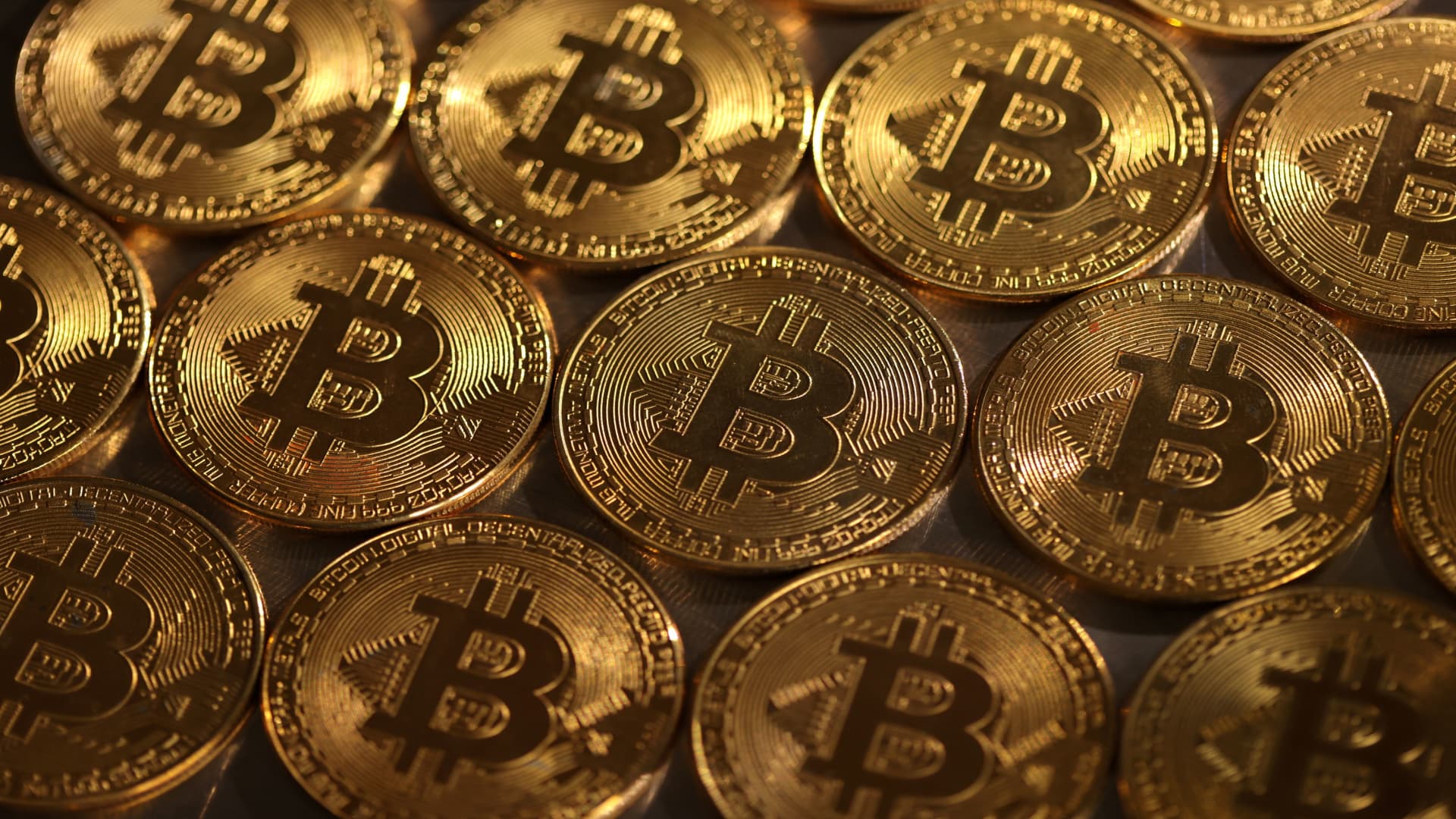Representations of cryptocurrency Bitcoin are seen in this illustration, August 10, 2022. REUTERS/Dado Ruvic/Illustration
Dado Ruvic | Reuters
It seems like bitcoin has a good setup for the new quarter, with major institutions signaling confidence in both the future of crypto and even in its U.S. regulators at the end of the month. Don’t get too carried away though – crypto is still part of the broader market, which remains in a challenging macro environment.
The third quarter is historically the weakest for bitcoin. The average third-quarter gain going back to 2014 is just 4.67%, according to CoinGecko, and it’s posted a positive third quarter for only four of the nine in its lifetime.
Before the recent rush of applications to launch U.S. spot bitcoin ETFs injected new optimism in the crypto market, it was a frustrating second quarter for traders. Between the end of the banking crisis in May and the BlackRock bitcoin ETF filing on June 15, regulatory pressure weighed heavily on sentiment and bitcoin traded sideways. That lull could come back in the next three months as industry drivers wrestle with macro drivers.
“It’s clear that [the Fed] is not fully comfortable yet with the direction of headline inflation numbers,” Christopher Ferraro, president and chief investment officer of Galaxy Digital, told CNBC. “So while they pause rate hikes, they’re in no way yet committing to a permanent pause or even a rate decline.”
Bitcoin historical quarterly performance since Q4 2013
| Q1 | Q2 | Q3 | Q4 | |
|---|---|---|---|---|
| Average return | 6.88% | 36.47% | 4.67% | 93.38% |
| Number of positive periods | 4 of 10 | 6 of 9 | 4 of 9 | 6 of 10 |
Source: CoinGecko
The Federal Reserve left interest rates unchanged at the conclusion of its June meeting, but said two more could be coming later this year. Some on Wall Street are anticipating the Fed will move in July and September. Powell has said the FOMC hasn’t decided if a new hike is likely to take place in July.
“You see every day disparate and sometimes orthogonal data points coming out around is the economy growing? Is it shrinking? Are we headed for recession, are we not?” Ferraro added. “It’s a very uncertain macro environment, which will make this not a one direction move for any asset class, let alone bitcoin.”
Cantor Fitzgerald’s Elliot Han said while bitcoin has finally reclaimed the $30,000 level, it failed to maintain it for several weeks as the macro challenges are “currently dampening upside for crypto.”
Regulation and ETFs
Beyond the macro backdrop, it’s clear developments in U.S. regulation and ETF applications will continue to be the main themes in the third quarter. The rush of efforts to get approval for a spot bitcoin ETF came at the height of the Securities and Exchange Commissions’ hostility toward crypto and many hope institutions like BlackRock, Fidelity and Invesco – which filed for a bitcoin ETF with Galaxy in June – can force some change. It could take a while, however.
“From a timing perspective, I think it’s largely unknown” when a decision on an ETF could come, Ferraro said. “But … all these institutions have real concerted efforts and likely would not have put the effort in motion now if there wasn’t a strong belief that the market and the regulators, in particular the SEC, were ready to allow regulated products.”
“Given all of the regulatory uncertainty and the court cases that are going on … it’s actually an opportune time for the regulators to allow regulated products into the market and help clear out some of the concern or lack of clarity,” he added.
The rest of the world
While that uncertainty continues in the U.S., other parts of the world are taking a friendlier stance toward the industry. U.K. regulators have developed a “Regulatory Sandbox” to allow crypto companies to test new innovations, continental Europe has an established exchange-traded products market for crypto, and Hong Kong has been clear and vocal about its desire to become a crypto hub for the world.
“There’s still a disparity in the treatment of crypto in the U.S. and the rest of the world,” Han said. “The question is will the U.S. follow suit or continue with its litigious approach?”
There’s a growing number of U.S. companies that are no longer willing to wait for regulatory clarity as the price of bitcoin ticks higher, he added – and many are expecting a big price surge in the spring they won’t want to miss.

Bitcoin is up more than 80% YTD
“Some are looking to move their headquarters, or at the least establish large offices, in crypto friendly jurisdictions,” Han added. “One U.S. crypto company we know is now even seriously contemplating its public listing in London or Hong Kong and we’re also seeing more U.S. crypto companies looking to create offshore offerings” like Ripple and Coinbase.
While Ferraro and others remain upbeat about the future of crypto and unworried that regulators will eventually find an appropriate path forward for American crypto businesses, it could end up being too little too late.
“I am optimistic we will get it right,” Ferraro said. “I am fearful that the U.S. will take its time and while that happens, sticky capital and sticky intellectual capital gets formed elsewhere in the world, and then it’s hard to undo.”
Credit: Source link















































